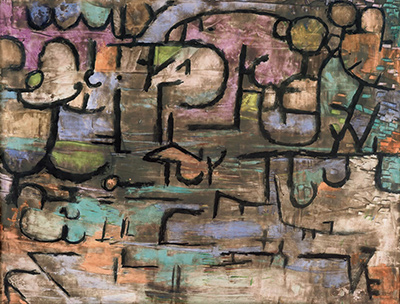After the Floods brings colour and an influence from primitive art
Paul Klee painted After the Floods in 1936 and it is just one of 25 paintings he created that year. In previous years his output had been much higher, but due to his terminal illness his productivity was vastly reduced.
The piece, originally titled Nach der Überschwemmung, was composed using coloured wallpaper paste along with watercolours using Ingres paper on cardboard.
The background is a variety of muted colours that almost looks like the reflection of light upon water. Compared to the other paintings Klee produced during this period, it has a greater variety of colour in the background.
The colours are mostly shown in large brush strokes until we reach the right of the painting, where we find a number of small rectangles that cover about two thirds of the right hand edge.
The bold black lines that are the focus of the painting are a common feature of Klee's work from this period. However, in other works the lines tend to be quite consistent in form and size while in this piece they are much more varied.
Starting at the bottom of the painting the lines are quite thin and weak, as if they have been almost washed away by the flood. As we move further up towards the top the lines grow bolder and more solid, although at the edge there is still a slight blurring to indicate the recent presence of water.
As we move up the painting, not only do the lines get bolder, but they also start becoming larger and more interconnected creating the impressions of shapes and words that are no longer legible due to the flood.




